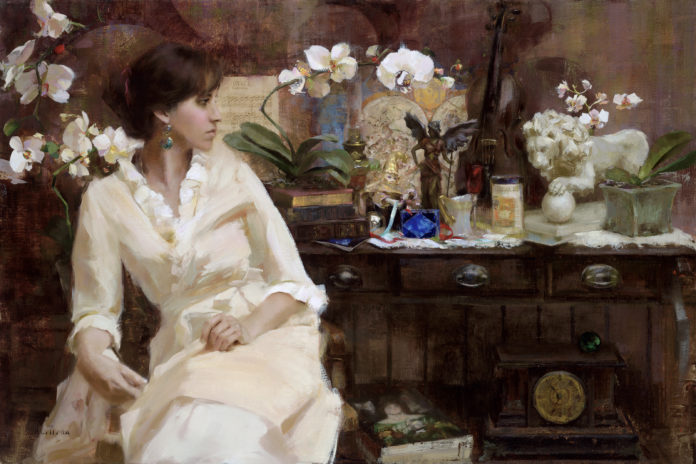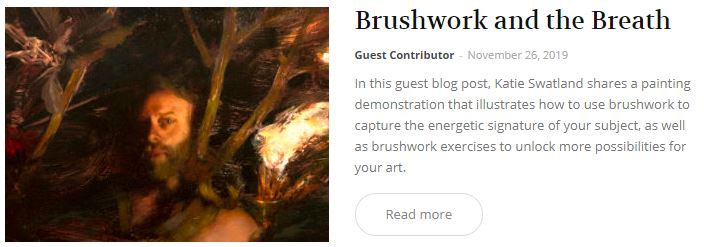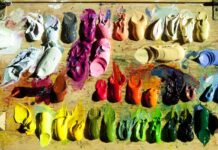On painting figurative art > The skill of good observation, the ability to convey the three-dimensionality of form convincingly, and the cultivation of edge, color and value sensitivity—all stem from an understanding of the nature of the underlying structure.
BY KATIE SWATLAND
The Underlying Structure
We live in a world composed of forms existing in three-dimensional space—finite boundaries which define volumes, weights, and densities of an infinite variety of matter. Our own physical construction is one of the purest and most complex examples of such finite boundaries.
As artists, we are challenged with the task of creating the illusion of space and form on a two-dimensional playing field. Knowledge of the underlying structure is crucial to creating the illusion of space and form on the canvas. An understanding of what lies beneath the surface is a great ally not only in drawing, or when simplifying the masses, but when visualizing a subject in space on the flat, two-dimensional working surface. This knowledge can also give clues for where to observe shifts in color temperature and value.
For example, when I painted my friend Becky, I found it helpful to first block-in the light and shadow pattern as it related to the structure of her skull. I spent a lot of time articulating the shapes with my brush, imagining my brush riding along the underlying bone structures before even entertaining placing in any details, such as her eyes.
Shown below is Stage 1. In these beginning moments, I feel very free and I allow my brush to follow my imagination of creating three-dimensionality. My canvas is no longer a flat plane, but a piece of infinite space, with its edges acting as if they were boundaries of an open window. I spend a lot of time thinking about volume, and drawing through the form. My brush mimics these thoughts, and I often find myself, for better or worse, waving the brush about in circular and elliptical motions, sometimes never even coming in contact with the canvas. I may look a bit silly, but it helps me to visualize and feel the volume of form in my window of infinite space.
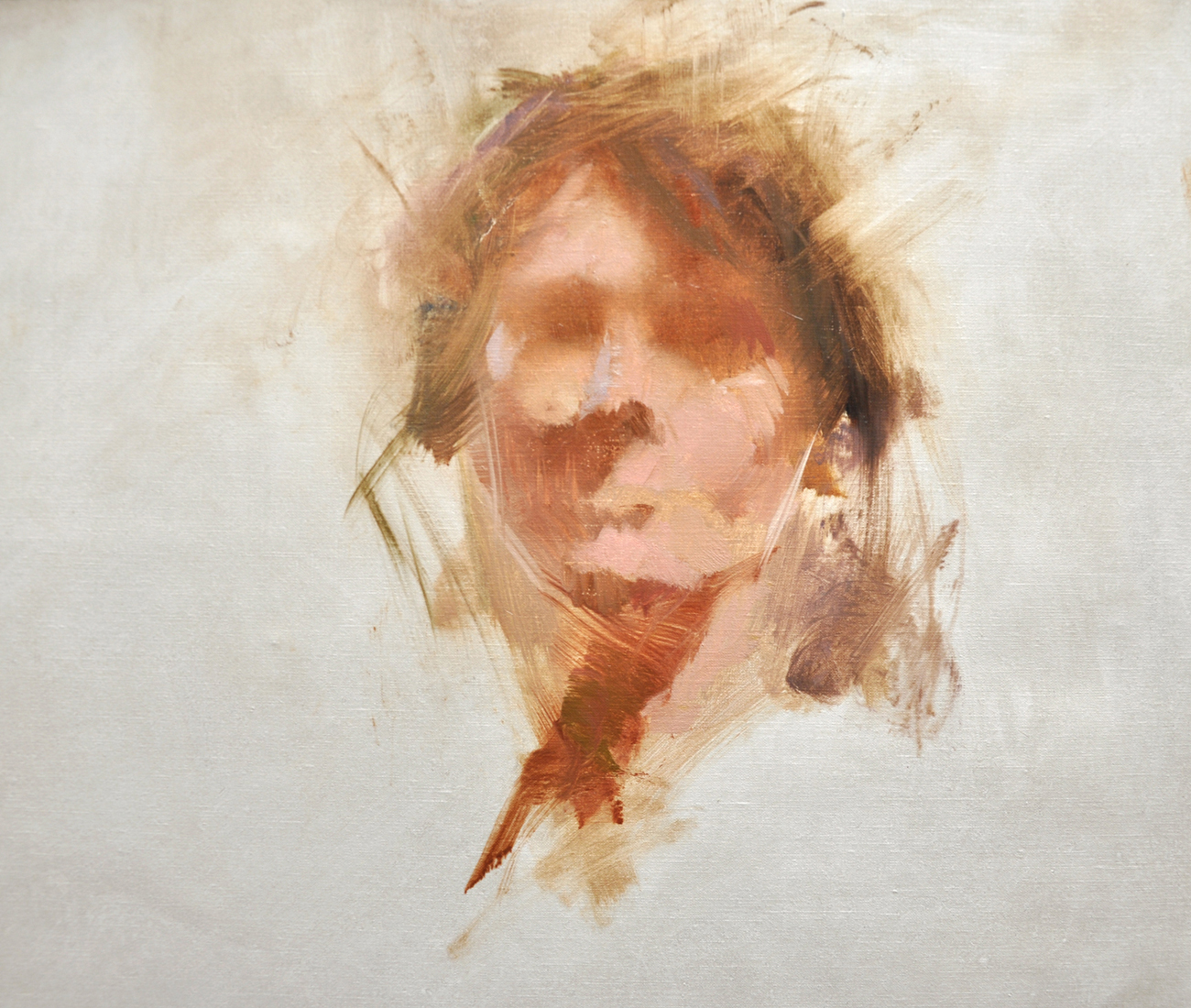
In this second stage, I slowed down significantly to further refine the shapes of light and shadow. I manipulated and softened edges with dry brushes. In these beginning stages, I prefer to keep my edges soft and malleable. Edges are relative quantities. I have yet to find an edge on a person’s face anywhere near the degree of sharpness of the edges found in the surrounding environment, such as in clothing or background elements. Just because an edge may be sharper in comparison to another, does not mean the hardest edge possible should be used. Consider the range of soft and hard edges, and use them in appropriate, relative degrees.
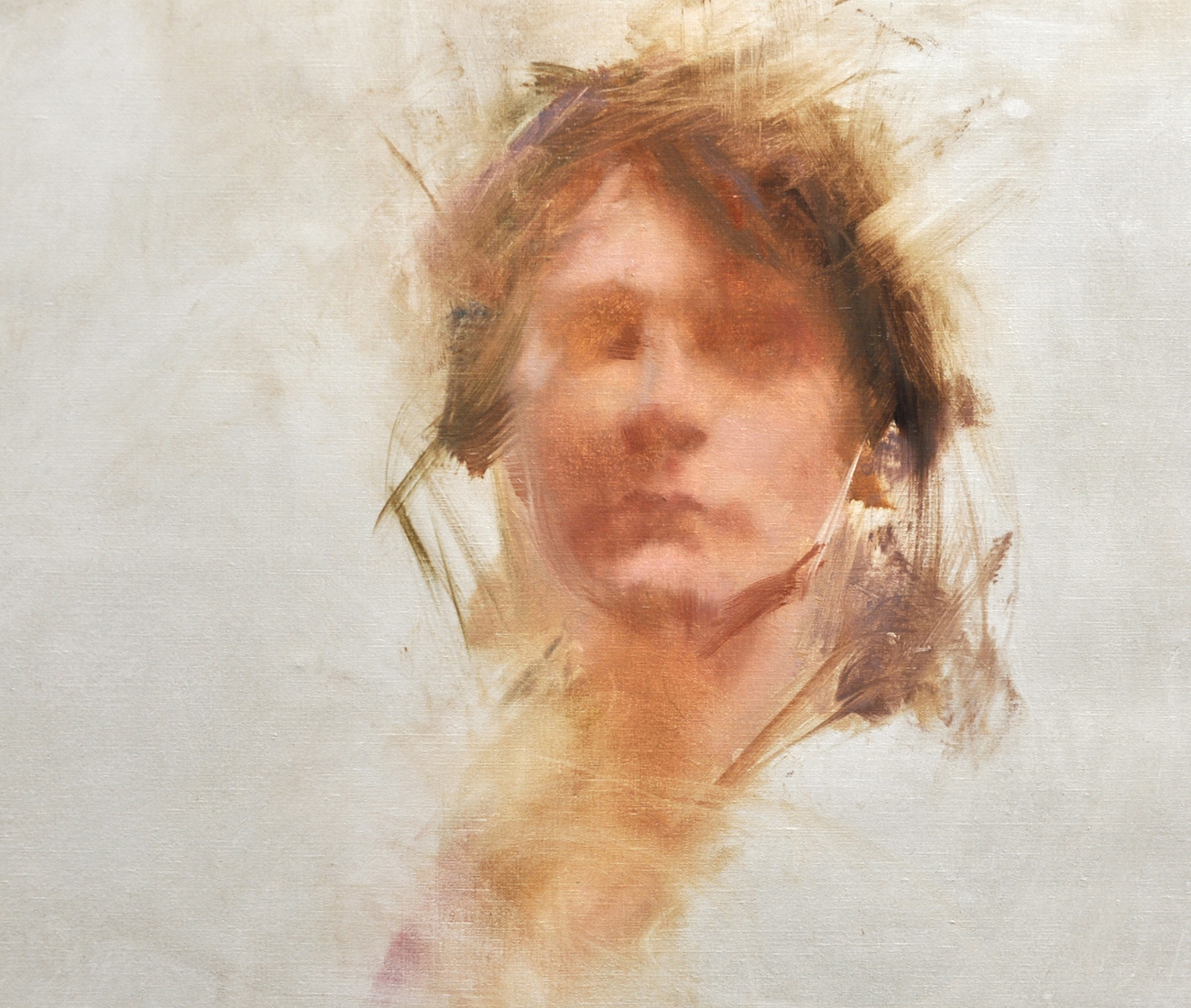
This next stage is where Becky really begins to take on life and form. There are no facial features placed in yet, but it is clear where they belong. The underlying skeletal structure is solid, clear, and fully revealing of where to place her eyes, nose and lips. It serves much like a roadmap. From this point forward, all I need to do is be mindful of the relation of the parts to the whole when painting the smaller shapes of light and color to express her facial features.
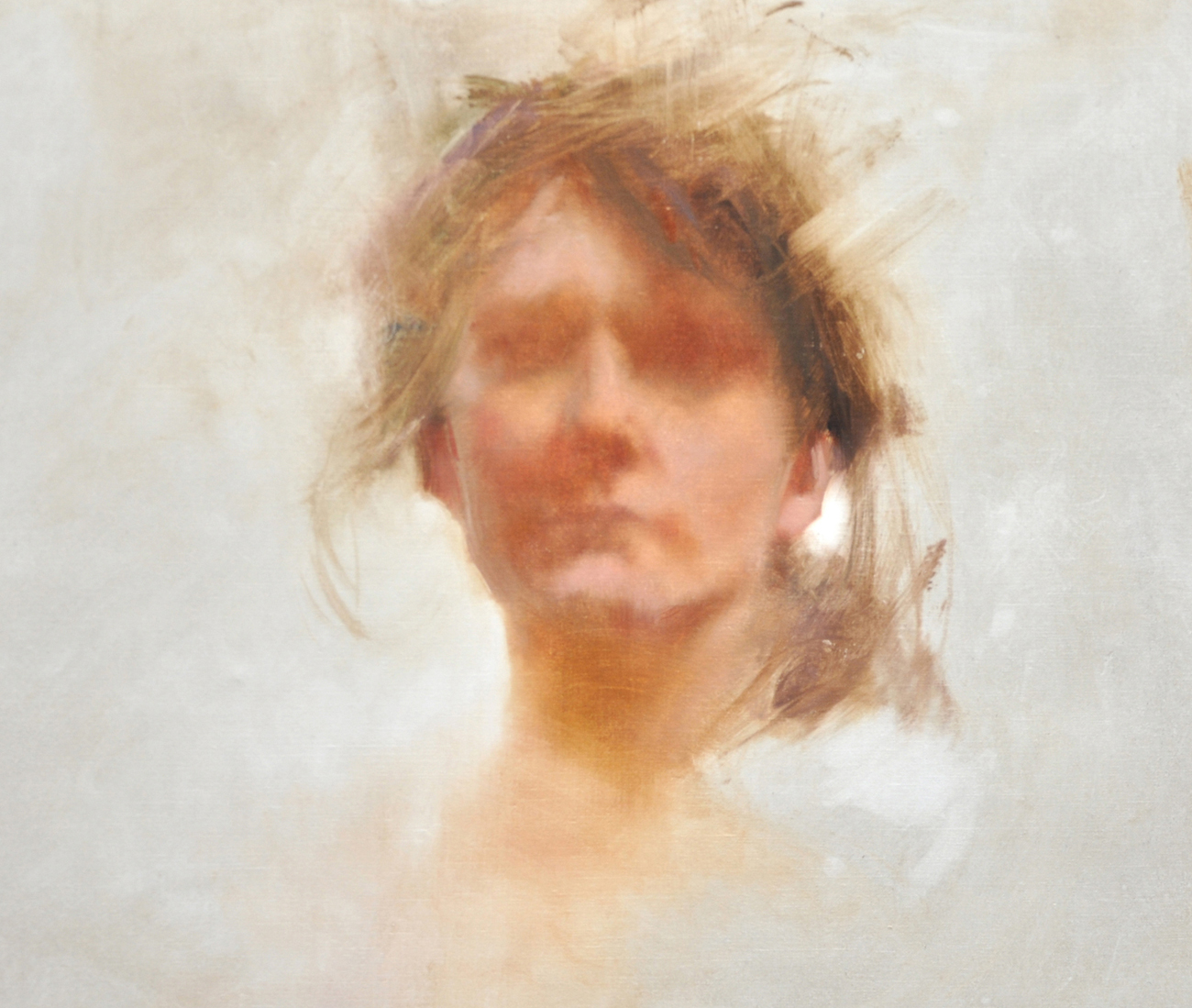
Below, in Stage 4, I began blocking-in Becky’s eyes, nose and lips. This stage took patience and a lot of comparative analysis.
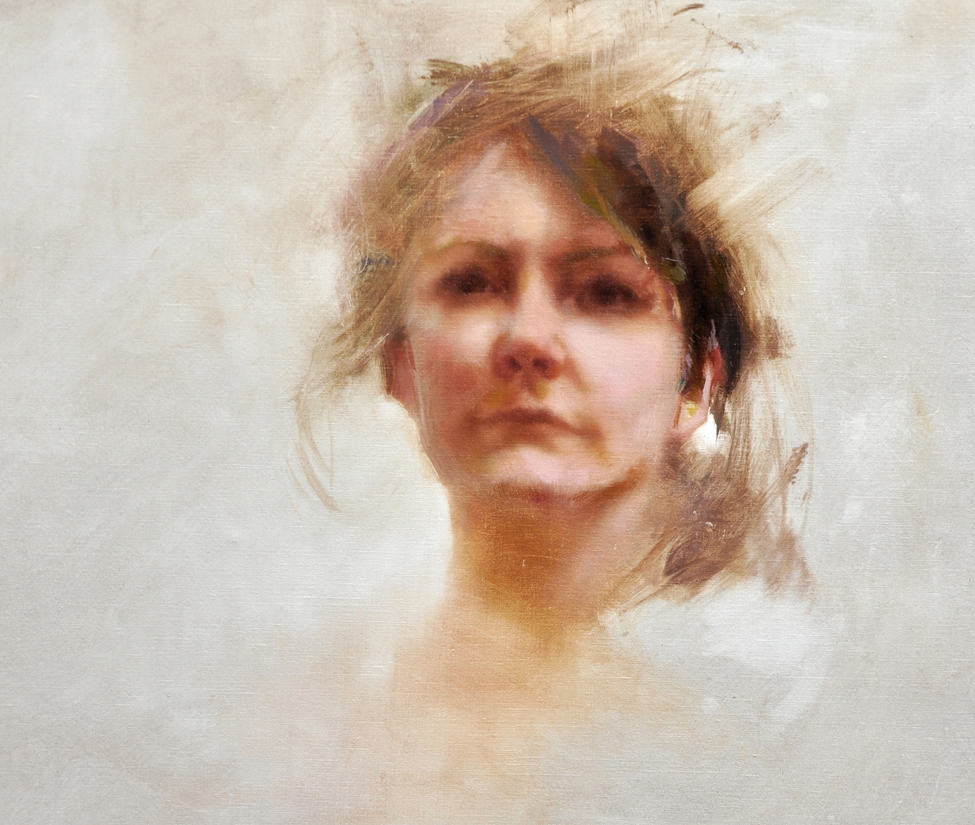
Shown below is the final version of this painting. I chose to stop just short of a formal portrait because I wished to maintain some of the loose and sketchy brushwork from the beginning stages.
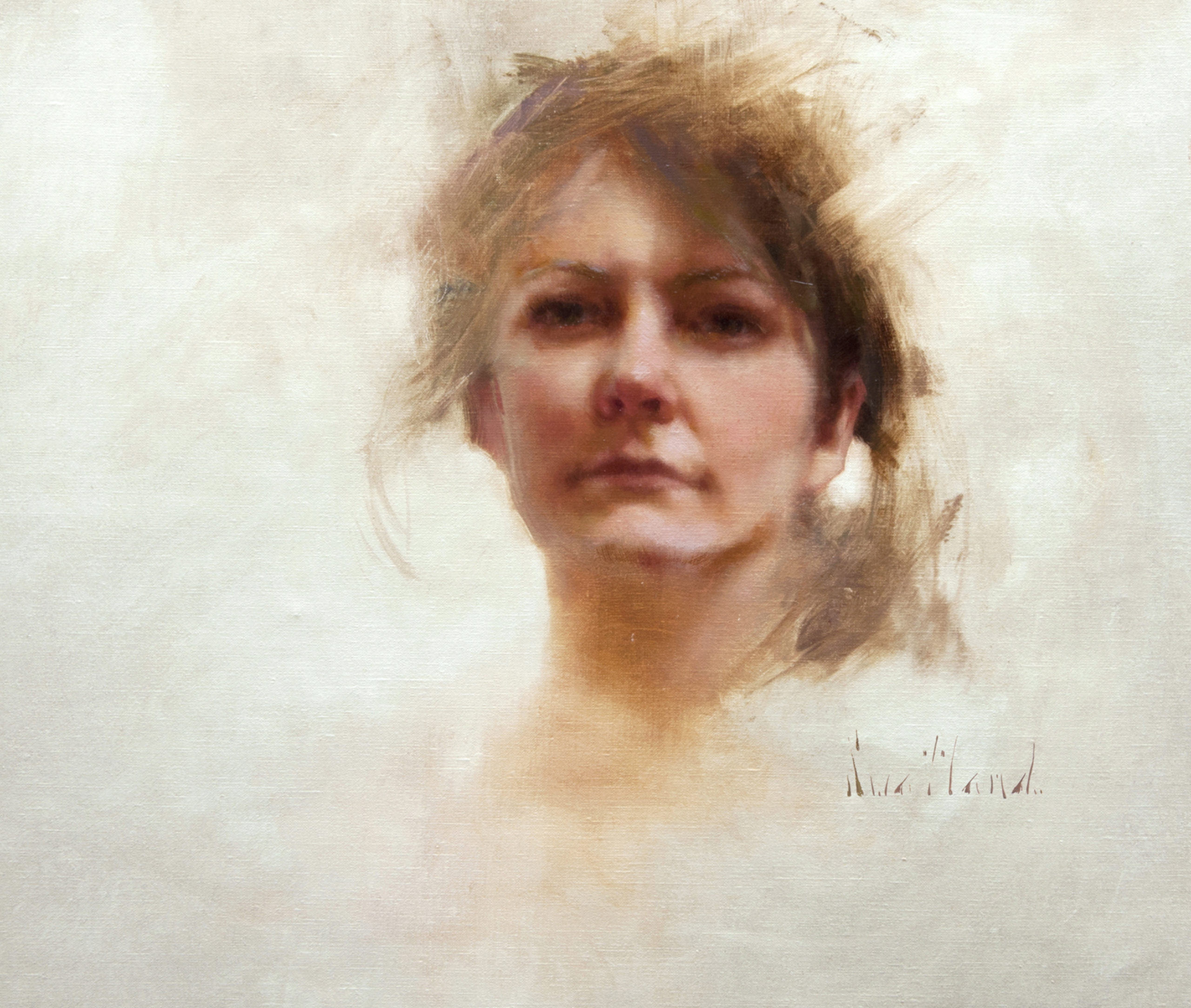
As shown previously, knowledge of the skull structure is extremely helpful when painting portraits. I dedicate a significant amount of time to studying the underlying structure of the human form, as it is an excellent indicator of what I see on the surface, and helps me to be a better observer of light’s behavior on the form.
In my studio I have attached a skull model to a gooseneck clamp, which can be secured to anything sturdy, like a table edge or tripod. I often have this skull sitting next to my live model. The gooseneck allows me to orient the skull in the same position in space as my model’s head. It not only serves as a superb reminder and reference of the basic bone structure that gives way to the visual shapes and edges I am seeing, but it is also a great assistance when drawing the form in space.
For example, when I was painting the violinist, shown below, I was at first having a hard time with the drawing. His head was tilted down and forward in space, and in addition, his chin was pressed against his violin. It was an orientation in space that I found difficult to draw convincingly. That is, until I took out my skull model, and placed it in the same position.
With the visual reference of the underlying structure, I was able to better understand the volume and placement of the head. It helped me to see the center line, and the corresponding intersecting ellipses for the eyes, nose and mouth. Once these reference lines were placed in, it was a simple matter to place in the facial features, as I could better see their placement against the whole, and how much or how little was visible from my viewpoint of this orientation.
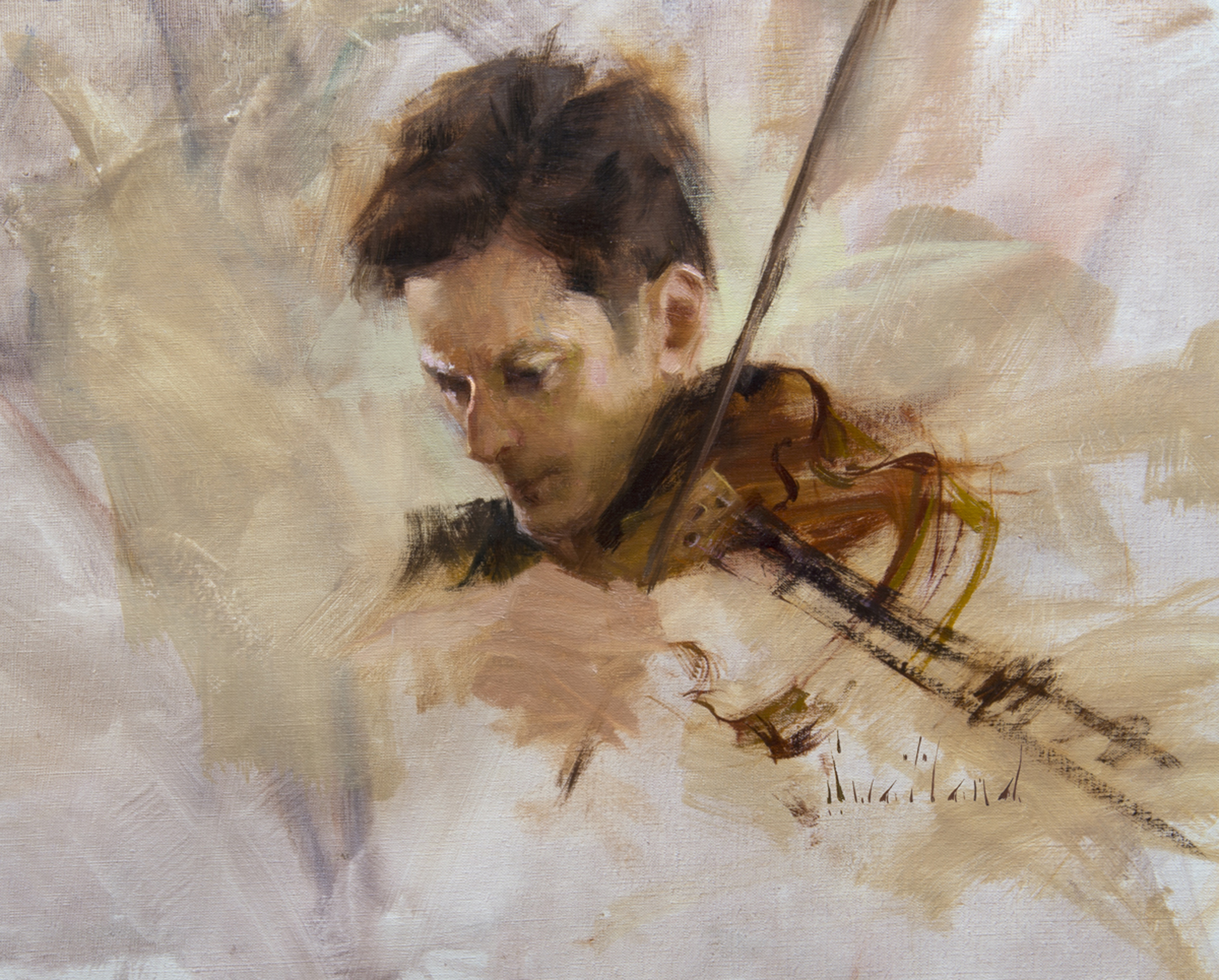
Figurative Art: The Underlying Tone
At the start of a painting, it is a common practice to apply a tonal wash to the canvas (or a thin scumble), to assist in determining value relationships, block-in large masses, and indicate the placement of compositional elements. This tone can also serve to describe the underlying structure, providing, right from the beginning, the sense of three-dimensional form upon which the smaller shapes that give way to the details of drawing, value, color, and edges can be built.
In this next example, I show a different way of thinking about the underlying structure, and demonstrate, with the use of an underlying tone, how it can help with simplifying the process of expressing a subject in terms of paint.
When I painted my friend, pianist and composer Christos Vayenas, I wished to sketch him as I often find him—lost in reverie, dreaming about his next creation. It was suiting then to pose him on the couch in my studio, where he often resides when we discuss the pieces and theories we are respectively developing.
When I envisioned this painting, I knew I wanted to include a full figure view, and compose it in such as way as to suggest the sense of space in the room. Instead of beginning with the figure, as I often do, I first wanted to set the stage by indicating the size of the couch and its placement within the picture frame. Approaching it in this way, rather than starting with the figure and building outward, would provide me with an anchor from which I could use as comparison for the figure.
I began by giving the canvas a turpentine wash consisting of Transparent Oxide Red and Cobalt Blue Light. Once the canvas was covered, I then took a roll of paper towels, and using the corners, indicated the top line of the couch by wiping away the wash to draw in the pillows on the couch. I proceeded in this fashion, and placed in the rest of the couch by “unpainting” it with the use of paper towels, my fingers, and even Q-tips. In areas where I needed darker shapes to define the form, or indicate shadow, I took bristle brushes loaded with the turpentine wash described previously and brushed in the shapes I needed using deliberate strokes.
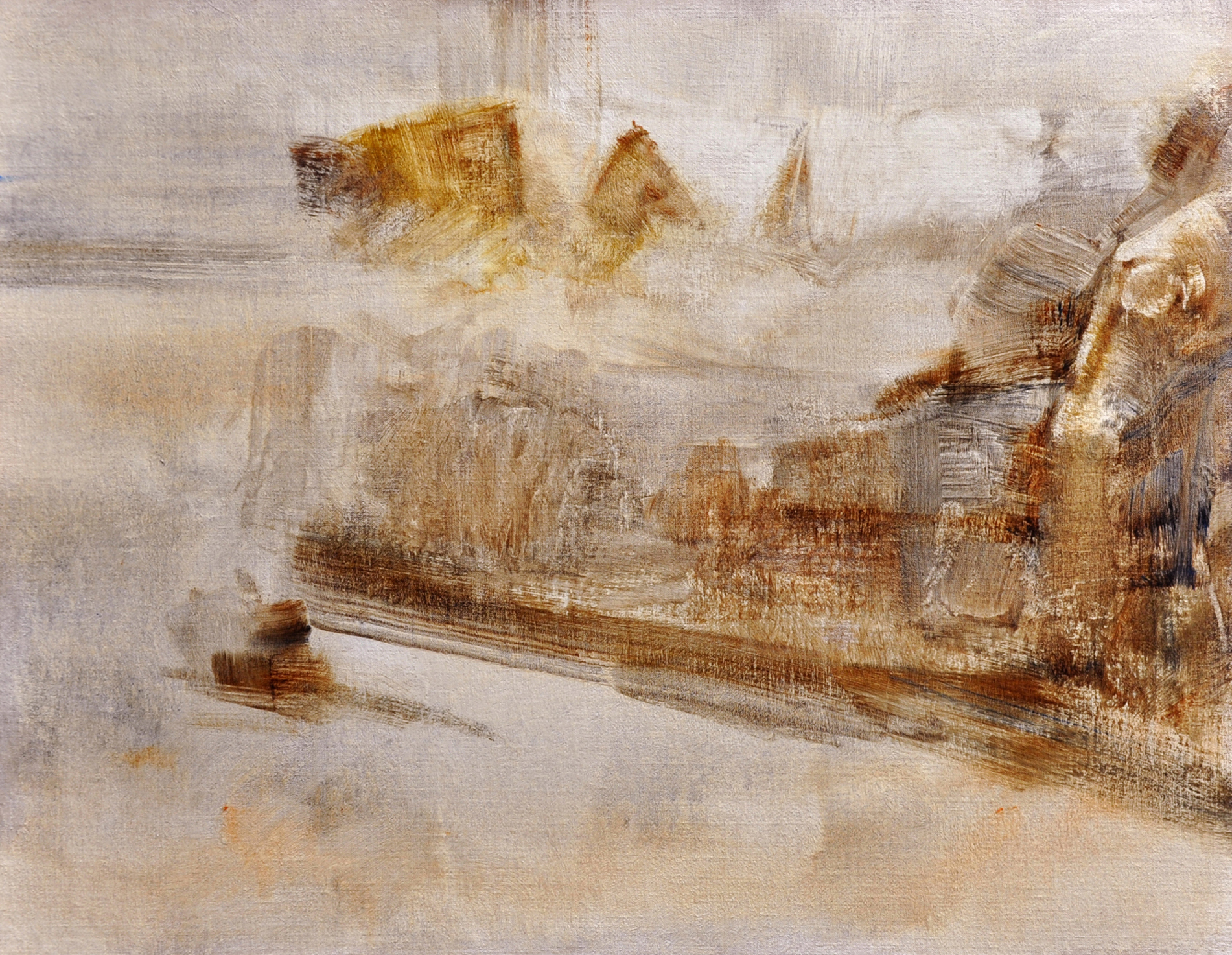
With the couch in place, I then began to focus on painting Christos, who had at this point drifted off into deep thought. I discreetly indicated a few placement lines to determine things like the size of the head, and other key features that would help with the placement and drawing of the figure as I progressed.
Once I had everything accurately blocked-in, the careful finishing work began. I started with Christos’ head, carefully describing his face and hat in terms of paint. I did not move on until I had this area exactly right, for this would serve as my reference for the degree of finish I would desire for the remainder of the piece. Shown below is a detail of this second stage.
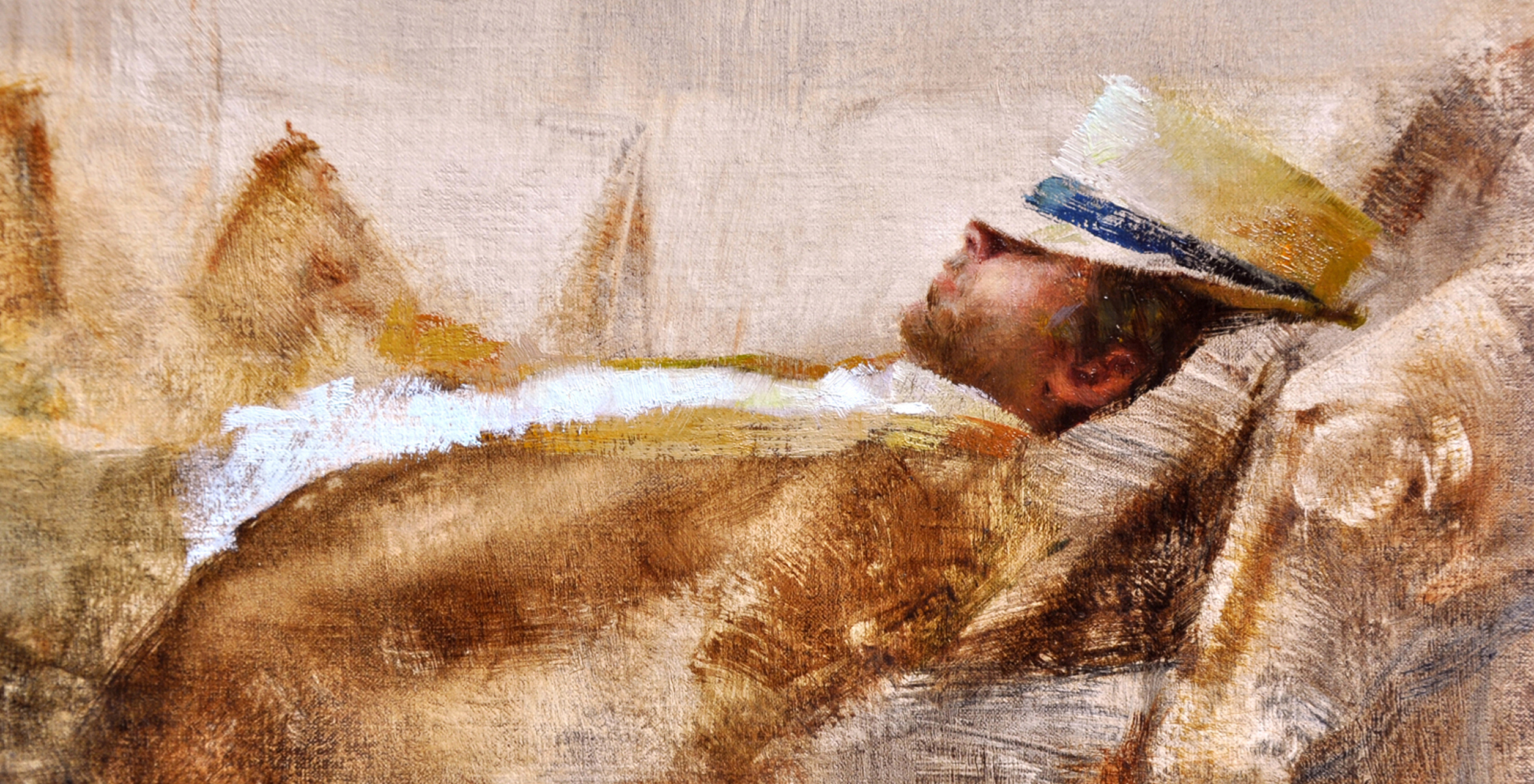
I continued to make my way down, indicating the rest of his body. I was careful to keep in mind the underlying skeletal structures of his torso, arms, legs, and their relationship to each other as I proceeded. This knowledge helped me to make sense of the clothing as it draped over him, and assisted in my choices for simplifying the fabric folds by only choosing those which helped to define the form.
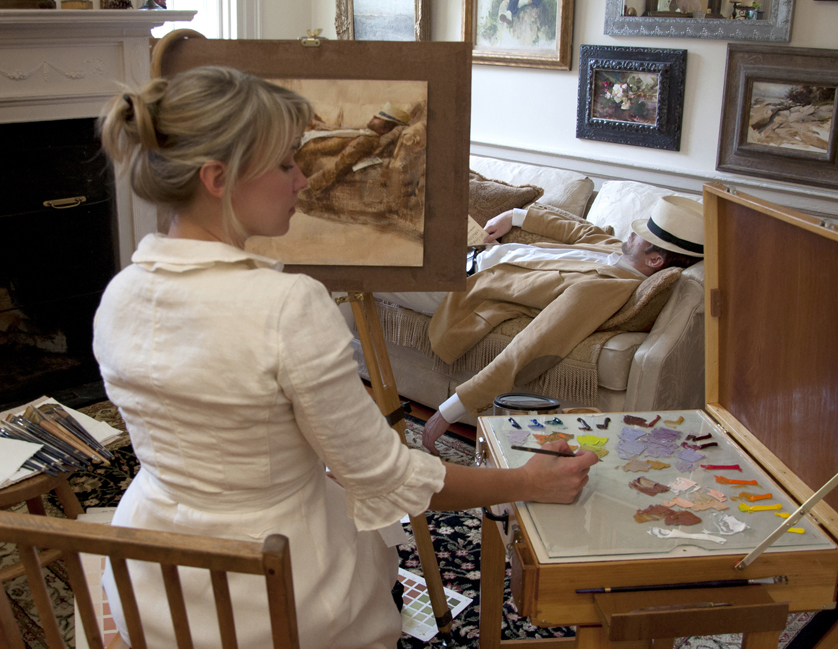
Shown below is the completed piece. Notice the combinations of transparent washes and opaque paint used in the description of his clothing, especially in his pants and shoes.
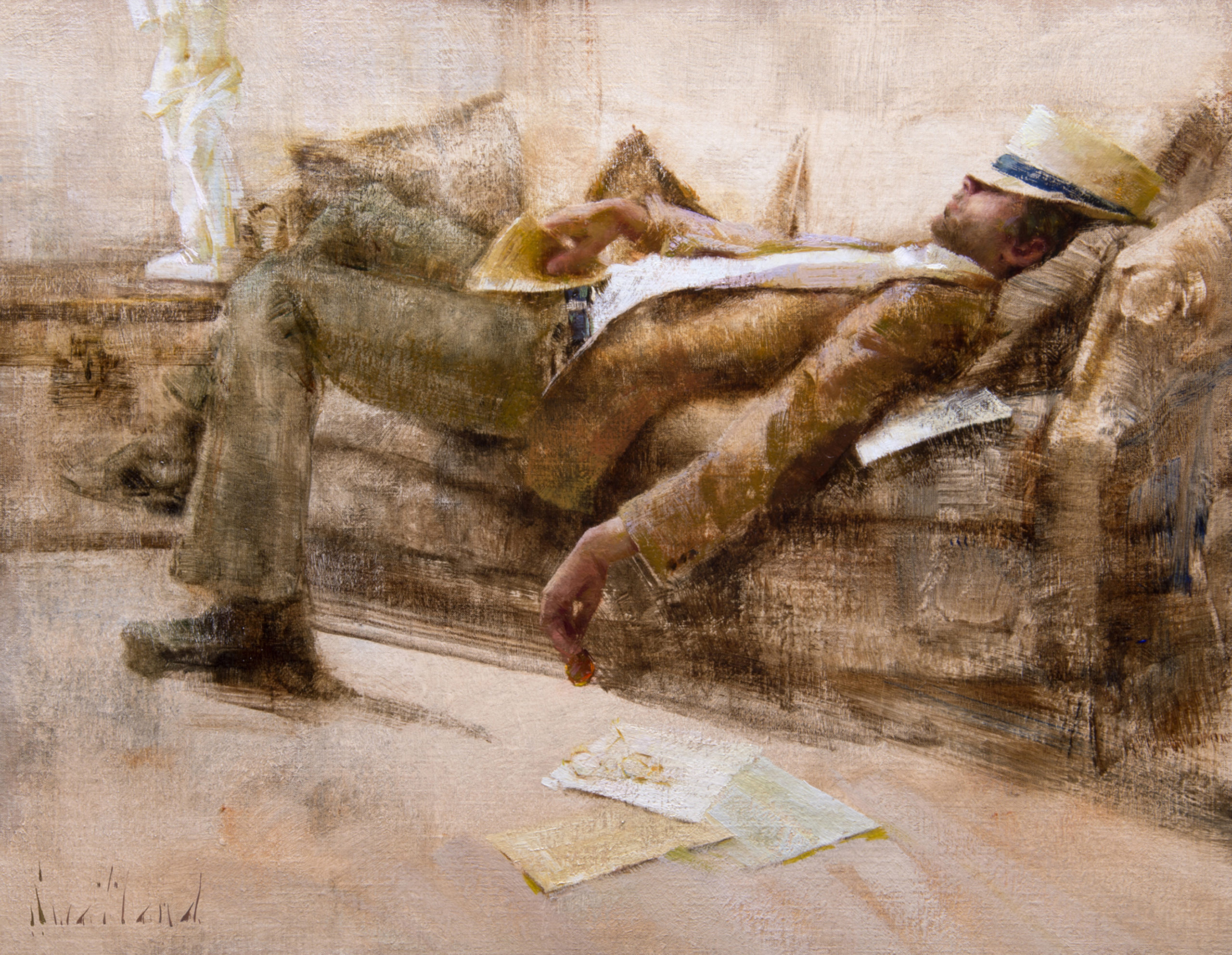
Carrying it Further
As shown, having knowledge of the underlying forms is a superior advantage when expressing your subjects in terms of paint. The skill of good observation, the ability to convey the three-dimensionality of form convincingly, and the cultivation of edge, color and value sensitivity—all stem from an understanding of the nature of the underlying structure.
This goes even deeper still, and taking an interest in exploring the nature of light and pigment can be a great aid in the ability to breathe life into the paintings that live in the far reaches of our imagination.
As painters, we spend countless hours observing and creating illusions of light on our canvases, using colors in the form of pigments to make statements about our visual world. In our grand efforts to make convincing pictures, it can be easy to overlook the very nature of what it is we paint and what we use to paint it with! What is light? What is color and why do we see it? What are pigments? What is subtractive color . . . what is additive color?
Understanding why we see color can help tremendously in how we use color when painting. It is yet another way to explore the nature of the underlying structure, and is a powerful way to unlock worlds of infinite potential and possibility.
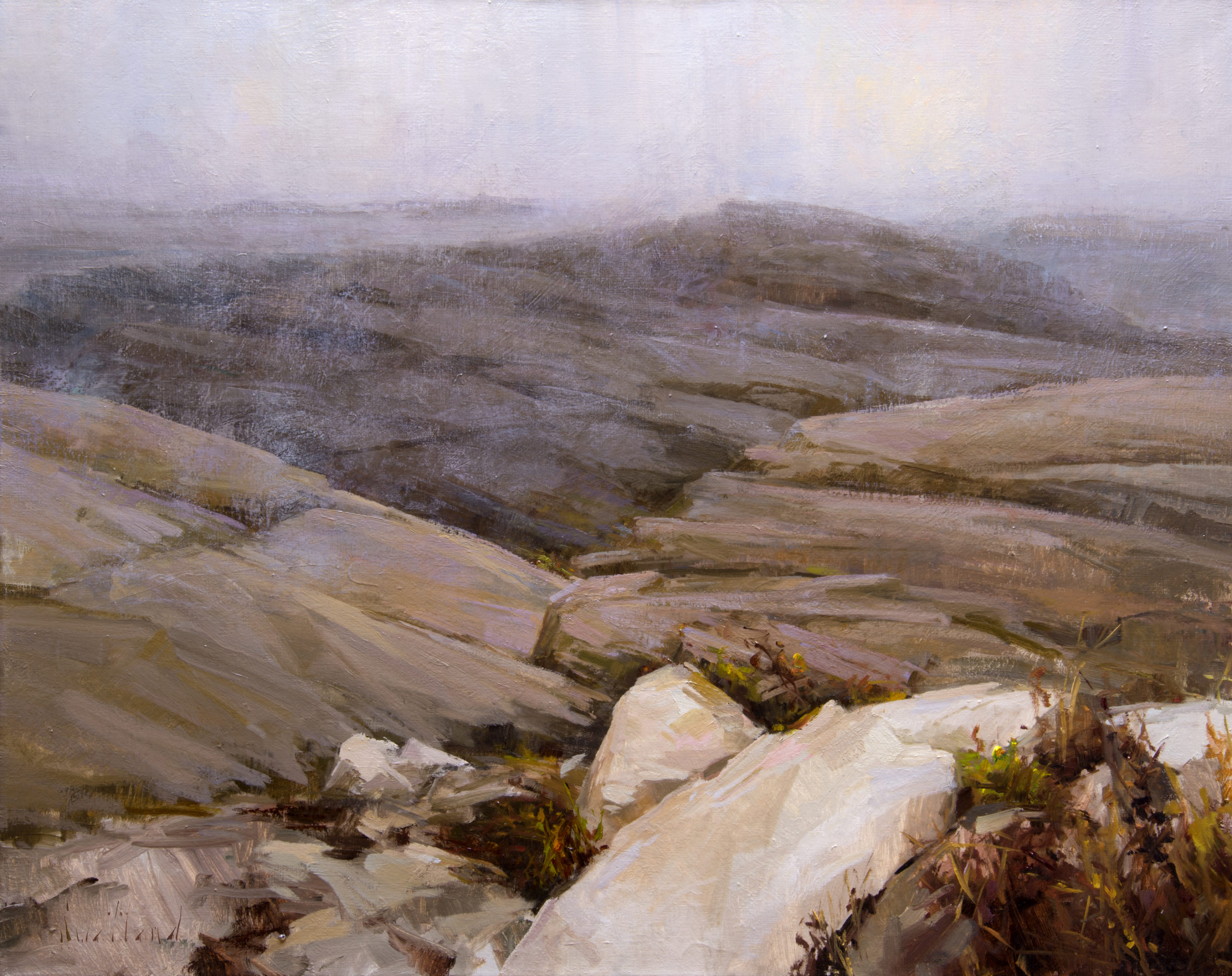
Learn more about Katie Swatland and her figurative art at: www.katieswatland.com


